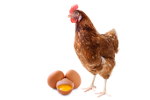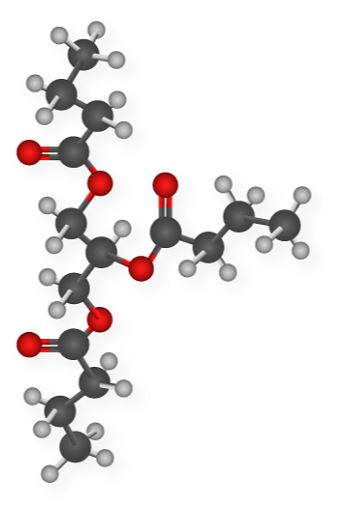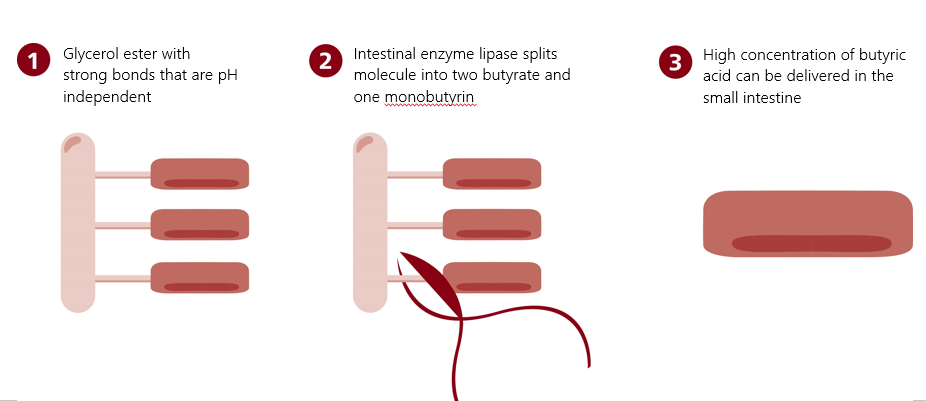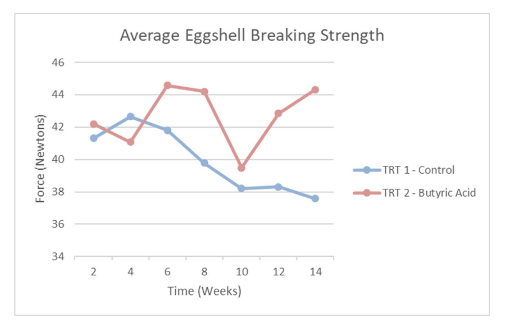 Organic acids, particularly short-chain fatty acids (SCFAs) like butyric acid, foster optimal gut health. They can significantly contribute to the improved productivity of aging laying hens, enabling farmers to depend on their performance and extend their laying phase ensuring that at the same time the well-being of the animal. ProPhorce™ SR 130, a butyric acid ester product, shows great improvements in performance of older laying hens.
Organic acids, particularly short-chain fatty acids (SCFAs) like butyric acid, foster optimal gut health. They can significantly contribute to the improved productivity of aging laying hens, enabling farmers to depend on their performance and extend their laying phase ensuring that at the same time the well-being of the animal. ProPhorce™ SR 130, a butyric acid ester product, shows great improvements in performance of older laying hens.
Extending the laying phase of laying hens can be a strategy for egg producers to save money and ensure optimal profitability. In fact, by prolonging the laying period, farmers can maximize their overall egg output, reduce the need for frequent replacements and enhance operational efficiency by avoiding disruptions caused by introducing new birds. Additionally rearing chicks into mature laying hens requires significant investments in feed, housing, veterinary care and labor. By extending the laying phase, farmers can utilize the existing flock for a longer duration and reduce rearing costs. However, it's crucial to prioritize the welfare and health of the hens during the extended laying phase. Providing proper nutrition, monitoring their well-being, and promptly addressing any issues are essential for ensuring the continued productivity and welfare of the birds.
Butyric acid: a key ingredient for optimal performance
Butyric acid is produced in the gastrointestinal tract of birds as well as humans and other monogastric animals through the microbial fermentation of indigestible carbohydrates. Butyric acid plays a crucial role in maintaining gut integrity by regulating factors such as luminal pH, mucus production and providing fuel for epithelial cells. Additionally, it has various tissue-specific effects on the host's metabolic health like appetite regulation, energy expenditure, glucose homeostasis, and immunomodulation. Still there is a lot that the scientific community still needs to further investigate regarding the role of butyric acid for gut health in birds and in laying hens.
The specific daily requirements of butyric acid for birds remain largely unclear. It is conceivable that the range can vary significantly and it is generally expected that microbial fermentation processes would sufficiently cover these requirements. However, modern poultry diets often fail to provide adequate amounts of nutrients necessary for microbial fermentation. Furthermore, the majority of butyric acid production occurs in the lower gastrointestinal tract, limiting its impact mainly there. Therefore, it is extremely beneficial to supply butyric acid through feed using a proper technology to protect the active ingredient in order to target the small intestine, ensuring that this active compound can exert its beneficial effects focusing on the tract of the gut where most of the nutrient absorption takes place in order to maximize the performance of the feed provided to the animals.
A healthy upper part of the small intestine is crucial for laying hens because here the Calcium uptake takes place via designated transporters present in the intestinal lining. Calcium is crucial for laying hens due to its vital role in eggshell formation and overall bone health. Ensuring proper calcium intake is vital for both the hen's health and the production of high-quality eggs. By improving the health and integrity of the intestinal lining, butyric acid enhances the efficiency of calcium absorption in the small intestine.
Protect and deliver with precision: ProPhorce™ SR 130
Esterification is the process of combining an alcohol with an acid. When this process is used to combine glycerol with butyric acid the chemical reaction results in the formation of an ester bond that occurs for each of the three hydroxyl groups in glycerol, leading to the formation of a triglyceride molecule containing butyric acid.

Figure 1: Molecular structure of a tributyrin molecule.
ProPhorce™ SR 130 is an esterified butyric acid product that uses the benefits and strengths of the esterification technology to obtain several key advantages for poultry producers:
Controlled release in the small intestine: triglycerides are large molecules that require enzymatic breakdown for their digestion and absorption. In the case of butyric acid-containing triglycerides, the release of butyric acid occurs primarily in the small intestine. Lipases are needed to cleave the ester bonds of triglycerides, so that the butyric acid can be released. This controlled release allows for the targeted delivery of butyric acid to the small intestine, where it can exert its beneficial effects on gut health.
Figure 2: Schematic representation of the enzymatic cleaving process of fatty acids from a glycerol ester. The intestinal enzyme lipase will cleave two molecules of butyric acid from the tributyrin resulting in the release of two butyrate ions and a monobutyrin.
Great product stability: triglycerides are relatively stable compounds. During the feed preparation processes, which involve high heat and pressure, the ester bonds in triglycerides are not easily broken. This stability ensures that the butyric acid remains intact within the triglyceride structure and minimizes the risk of losing the active ingredient during feed processing.
Odor reduction: butyric acid itself has a strong and unpleasant smell. However, when it is esterified into triglycerides, odor does not play a big role anymore and hence feed intake will not be negatively impacted. The esterification process in fact helps to mask the odor of butyric acid, making it more suitable for various applications, including feed production.
ProPhorce™ SR 130 for the success of old layers
In a trial run at the University of Nebraska with older laying hen flock aged 86 to 100 weeks ProPhorce™ SR 130 showed improved digestion parameters and improved eggshell strength.
Two treatments were given to Bovan White Leghorn hens: a control group and a group supplemented with the product at the standard dosage of 500 g per ton of feed. The hens were housed in traditional cage units (12 replicate of 3 hens each) for a duration of 14 weeks. The basal diets consisted of corn/soy-based feed that followed the NRC laying hen nutrient recommendations of 1994.
The results indicated that the supplementation of butyric acid had a positive impact on eggshell breaking strength (p<.08), which improved from 39.501 kg to 42.522 kg (see figure 1). This effect was particularly notable at the end of the trial at week 11 (p<.06) and week 13 (p<.01).
Figure 3: Egg shell breaking strength (diet p<0.0876)
ProPhorce™ SR 130 clearly showed benefits for enhanced nutrient absorption and digestion as well as improved eggshell calcification and strength in the end-of -cycle laying hens.
By: Antonia Tacconi, PhD
Global Product Manager – Gut Health Perstorp Animal Nutrition


















